|
How do you handle irresponsible stories about pet pigs? You educate. Recently, we were made aware of a story that aired on Fox news as well as shared to their many Facebook page feeds and added to their website. Naturally this story glamorized pigs and how small they stayed, the usual myths that are tossed around by uneducated people. I don't blame Fox news entirely, but I do place some of the blame on them for not checking facts before airing such a ridiculous story. Despite the wealth of information available to people, unfortunately, they will believe what they want to believe. They will take bits and pieces from different websites and groups and come up with their own conclusion about pigs and this mythical micro pig. http://www.fox10phoenix.com/news/arizona-news/micropigs. They likely didn't mean to cause a riot, but I know I reached out to them privately as did several of my friends when we were alerted to this story. Thankfully, the news has reached out to several rescues and will be doing a story on the unwanted pigs across the US to counter the inaccurate story they already did. I am happy to report they did, in fact, do a story about rescue that can be seen by clicking the following link. (http://www.fox13news.com/news/news/pigrescuesoverwhelmed-story) It is stories like the first one that cause a surge of people to run out and get a pig on a whim. We are the ones left to network and find homes in a few months, once the novelty wears off. Rescues do not have any more room for any more pigs. People do not have any more room in their homes for any more pigs. Shelters aren't equipped to handle pigs, craigslist isn't a place that I would ever suggest a person to try and rehome their pig on. It has gotten so out of control, and this is only February, the pigs that were bought as Christmas gifts are about to start being rehomed in the next month or so too....stories like this do not help the already overpopulated pig problem. If you are considering getting a pig for you and your family, please go check out a pig rescue. Volunteer for a day. Get to see firsthand what having a pig is like. You may even see the big ball of fun that was destined to live with you right there at that rescue. But, don't believe the lies. Trust your science community who have come up with actual breeds of pigs. Trust your universities who have done extensive research to be sure you are fully informed about what you are getting yourself in to. Trust the pig rescues that bring these unwanted/unloved pigs to their homes when they "grow too big" or are much different than what these people expected when they brought these pigs home. (Click here to see a list of pig rescues all over the world) These are the people who KNOW the truth and have evidence to support their way of thinking. I would say the 2 main reasons why pigs are rehomed are 1. Pig outgrows expectations and 2. The pig grows up and isn't a cute little piglet anymore, so ultimately the novelty wears off. That is a shame. People should be ashamed of themselves when they "have" to "get rid of" their pig because it's growing up. I pray these same people who don't take the responsibility seriously will care for their children should they have any. Anyone in pig world knows there is NO breed called teacup or micro or micro-mini. (Click here to read more about the teacup myth and how these annoying terms have fooled ALOT of people.) These terms are used to market these pigs and often mislead people into thinking they're getting something that they aren't. They're going to end up disappointed with what they find several years later, especially if they have unrealistic expectations. If you were to buy a BMW car only to find out in 5 years that it was a mini-van, you would probably be quite disappointed. Essentially telling people that these pigs will stay piglet size is doing just that. While we understand there are a few pigs out there that have stayed relatively small, they are the exception and not the rule. Let me add, the overall well-being of these pigs is also in question, especially after hearing the "expert" on the segment refer to these pigs as micro pigs, and the fact that you can see their bone structure indicates to me that they should weigh more than they do. If the weight of a pet is the most important factor when choosing what type you want to add to your family, then you should reconsider getting a pig. Pigs come in all shapes and sizes. Some are tall, some are long, others are short. Some pigs are fat, some are healthy and some are, simply put, starved. Pigs come in all heights, lengths, colors and each of these pigs will have their own unique personality to go with it. What are some physical signs that a pig may be starving? -Head is to large for their body (Often times bobble headed) -Sunken (hallow) eyes (No brightness, very dull eyes) -Gap under their chin (If you run your hand under their chin you will feel an indentation) -Low energy or lethargy (No zoomies) -Pigmentation of their skin is off -Legs tend to bow (Malnutrition also effects the skeletal system) -Resting their head on objects *this was a huge thing for me as that made me think, wait, MY pig does that! This doesn't convey when your pig does this occasionally, but when your pig can't stand or hold its' head up for long periods of time, this is a problem. -Hair is thinner and rougher, typically dull -Hair doesn't lie flat -Poor skin and coat -Pigs can also get super hairy when they're underweight too because the body is trying to compensate for the lack of body fat as well. So lack of hair or a lot of hair, both can point to a pig being underweight. -Some pigs gait is staggered or unsteady-affected by the malnourishment and they're not able to walk straight, often falling or they have a walking disorder such as goose-stepping due to vitamin/nutritional deficiencies, some can't walk at all -Eyes may have a glazed look or have a sadness to them -Backbone tends to curve upwards leaving a hunched-over stance -Bones visible through the skin. You should not be able to identify the skeletal structure from looking at a pig. This includes the facial structure. No, there shouldn't be excessive fat rolls, but you shouldn't be able to see the eye sockets and nasal bones either. -Lack of engagement. (These pigs seem to have ADD- they're often too tired and starving to pay attention or follow commands) -Bloated or distended belly. (It is the same thing that happens to humans when they have very little to eat, the belly fills with gas giving a "bloated" look. There are other medical reasons for this as well, but combined with other symptoms from above, it points to a malnourished pig.) -Often times people know they're starving these pigs and will keep clothing on them to cover the bones. We are NOT saying all pigs that wear clothes are starving. We ARE saying that people will try to hide it though. -Aggression can be a result of a starving pig. Pigs that are hungry can also be angry. A starving pig may try to fight for more food. This is LIFE or DEATH for them! -Pigs that eat ANYTHING in sight. A starving pig will eat anything to try and fill their belly. Some pigs have nutritional deficiencies and eat odd things, like drywall. But a starving pig will eat carpet, drywall, toys, flooring, anything they can fit in their mouths and swallow. Pigs have a natural curiosity that usually results in them "tasting" many things (including the list above) but they're not desperately looking for food. YOU know whether or not your pig is starving and YOUR pig is the one who will suffer and pay the ultimate price with their life if you continue to do this to them. These aren't the only signs, but these are clear identifiable signs that a pig is being starved. Starving pigs is a cruel way to stunt the growth. They may not show immediate signs of being starved, but eventually they will. There are no healthy, fully mature pigs under 50 pounds that I am aware of to date. There are no breeders that can consistently produce pigs that stay small. There may be breeders who claim they do, they may even have a pig or two that have a smaller stature and that is typically what they focus on...those particular pigs. Be extremely wary of breeders who tell you that in order for your pig to stay small, you need to buy the food THEY manufacture. Seriously? What's in this "feed"? Is there a label? Is this food nutritionally sound? Are the key ingredients tested routinely to be sure their vitamin/mineral's relatively remain consistent? I wouldn't buy some unknown brand of food for my pig with no identification for ANY reason. There are major brands of feed that we KNOW are healthy. These same companies have feed recommendations that you can follow to ensure your pig stays healthy from a nutrition standpoint. Do you know why people with these smaller pigs are discussed with such passion from those in the pig community? Because the pigs do NOT look healthy. I don't care what your vet has said, I don't care what you might think, when you can see the bones in the face, that pig is starved. Most pigs that are moderately starved will start to have behavioral issues, attacking or acting aggressive due to not getting enough to eat. This is a fairly common reaction. People who have to fight for food are the same, they'll do whatever they can in order to secure nourishment for their body. Some of these pigs are so starved, I highly doubt they have the energy to attack anyone. Are smaller pigs somehow better than bigger pigs? I don't think so. Having a pig that is smaller can certainly have its' benefits, but an angry, sad and starving pig? I just don't see the glamour in that. Having a small pig isn't worth the toll it takes on my pigs body. There is a huge gray area where body scoring is concerned. Fat pigs aren't any fun either, but a fat pig at least has the joy of eating, obviously these starving pigs have been denied that pleasure. When a pig doesn't get the appropriate amount of nutrition, there is a domino effect. The body can't grow like its supposed to leaving growth that is significantly stunted. The bones need nutrients found in correct amounts of feed, when this is not being given, these bones are weak and can become easily deformed. Sometimes these bones aren't strong enough to support the weight or begin to bow leaving disfigured legs or backbones and taking the ability to walk away from these pigs. These pigs suffer from broken bones or easily fracture their extremities. The lack of proper nutrition also takes a toll on the lymphatic system rendering the immune system worthless. These pigs will likely get sick often or won't be able to fight off common viruses or bacteria that other pigs can carry and never suffer effects from. These same illnesses can claim the life of starved pigs. The organs contained within the pigs body rely on nutrition to help them perform their duties within the body and although they will take the nutrients they can get, eventually, the capacity to function as they're supposed to will diminish. Starvation is one of the most deadly conditions on the planet; according to some studies, the effects of starvation play a major role in between one-third and one-half of all worldwide deaths of children under the age of five. The same rule applies to pigs. By depriving the body of nutrition, starvation slowly allows the body to devour its own reserves, including muscle, fat, and organs, up to the point of complete system shut-down and death. Understanding how starvation affects the body is important to recognizing the signs of malnutrition and preventing a growing nutrition-based problem from worsening beyond repair. The body is an effective storage device for fats, nutrients, and other important components. These stores are regulated by nutrition in the form of food, beverages, and vitamin and mineral supplements. When lack of nutrition occurs, the body quite quickly turns to stored reserves, beginning with glycogen, in order to keep vital functions up to par. As the body begins to devour more and more stored components to keep running, the physical effects of starvation become apparent. One of the first effects of starvation to occur is a drop in metabolism. In order to maximize efficiency, the body protects its insulating fat stores by consuming muscle stores instead, using these reserves to make up for the lack of calorie intake. Dropping metabolism can lead to feelings of fatigue, decreased capacity for activity, and mental sluggishness. This often results in staggering gait or neuro-like symptoms as well. This is sometimes visible early on, but sometimes the long term effects are not immediately identified. Since the body is busy keeping vital systems going, many non-vital functions slow or cease. Hormone production is often disrupted, Intact pigs may stop menstruating entirely, or experience erratic heat cycles. Malnutrition and starvation, therefore, can have serious developmental effects, even after recovery (if this is rectified), as normal hormonal functions may be temporarily or permanently thrown off track. The effects of starvation on the brain cause a lack of concentration, loss of motor skills, and increased likelihood of anxiety and depression. As the condition progresses, brain function decreases, leaving the victim, in this case, a pig, in a state of fatigue or torpor. Apathy continues to increase, until the pig may no longer be able to attempt to find food or survive. Initial weight loss will quickly turn to emaciation because of the effects of starvation. The limbs become extremely thin as muscle and fat stores are depleted, while the eyes and face begin to appear sunken. Lack of vital proteins can lead to the loss of hair, poor skin condition or development of edemas, which appear as large swollen areas. The stomach may protrude enormously, as part of a syndrome known as kwashiorkor. This can present as a bloated belly and even mimic the appearance of a large belly in general. (See the video below for examples) Starvation is frequently a result of uneducated people who have chosen to do this on purpose, but there have been times people have been told to feed extremely restricted diets by the very person who told them there was such a thing as a "micro" pig. While the effects can often be reversed up to a point, acute starvation can cause serious organ damage and often leads to long-term health conditions including cardiovascular problems. If a pig, particularly a piglet, is exhibiting signs of starvation, it is important to try and intervene. Perhaps this person doesn't know the long term effects of malnutrition? Maybe they do and have chosen this as a way to attempt to keep a pig at a particular size, but that is called abuse. Unattended, starvation leads inexorably towards death. Not necessarily immediate death, but the effects from long term starvation WILL ultimately lead to death. Educate, educate, educate. Anything can be said tactfully without a hostile undertone. There may even be circumstances you're not aware of, such as a pig being recently rescued from horrific situations, so be sure to ask and not accuse if you are truly trying to help. Do NOT jump all over someone because their pig is skinny, instead, take that opportunity to educate them. Once you lose your temper and get nasty with your comments, that person isn't going to listen to anything you have to say. Stay kind, be kind with your verbiage. Some of these people who have these pigs honestly do not know, they're listening to someone they feel is an expert, although we know otherwise, this person may not, even despite articles like this that are available online. You don't know the circumstances unless you ask. Some of these pigs may actually have recently been rescued, please keep that in mind as you're in conversations with people. NEVER assume. Keep your words sweet in case you have to eat them later. Starving pigs is causing psychological harm, although the degree of severity can be hard to truly determine. A pig trusts its human caretaker. By taking away the one things pigs love...food...essentially you have robbed them of their one achievable desire. What kinds of psychological harm do animals suffer? Rejecting: an active refusal to provide emotional support Terrorizing: the creation of a “climate of fear” or an unpredictable threat or hostility, preventing the victim from experiencing a sense of security. Taunting: teasing, provoking, harassing. Isolating: active prevention of social interactions and companionship. Abandonment: desertion and termination of care. Over-pressuring: placing excessive demands or pressure to perform and achieve. Starving a pig can fall into many of these categories. It may not be based on the descriptions above, but terrorizing and taunting comes to mind right off the bat. Knowingly limiting the amount of food your pig is able to eat in a way to "keep your pig small" is not only ignorant, but also abuse. DO NOT LIMIT YOUR PIGS FEED TO A TEASPOON OF FOOD BECAUSE SOMEONE IGNORANT TOLD YOU TO!!!! Here are a few pictures of pigs that we know of that were starved. You may or may not know the story of Sophie. Sophie was a pig that was not only starved, but also made to live in a bathtub her entire short life. When she was finally rescued, she was found to be malnourished and had multiple broken bones, likely as a result of starvation, but also due to her attempts to escape her horrible living situation. Very sad. The worst part of this? Her owners didn't see a problem with it. Sophie wasn't able to survive her injuries, but we are hopeful her story is enough to show others what starving a pig can ultimately do. Rest in paradise sweet girl. This unfortunate pig was saved and rehabbed by a friend. What was thought to be an issue with the spine was later discovered to be a result of malnutrition. This particular pig was also found to be pregnant in this picture, sadly enough. She did recover and was returned to her owner who "didn't know" about nutrition and is being carefully monitored by the friend who took her in and got her healthy. This is Frankie the pig. Obviously starved and full of mange, he was thankfully saved and is living a happy and healthy life!! These pigs were at a pig rescue (that is no longer around). Obviously malnourished and starved, they too, were saved and taken to a good rescue where they have recovered and are thriving in their new healthy life. These charts are NOT intended for piglets, but more for pigs over a year old...however, if your pig is a number 1, your pig needs to gain some weight regardless of the age. STOP STARVING PIGS TO KEEP THEM SMALL!!!!!! You will never get respect for abusing your pig, not from us or any respectable organization that has a genuine love for pigs. Big pigs are beautiful. There are no recognized breeds named teacup or micro. Check out the links below to see the sources, there are links on these pages from universities and the science community research studies. These are credible resources, not just some person who said so. Don't let your selfish desires outweigh the needs of a pig. Many are simply not equipped or prepared to bring one home and do so anyways. I was one of the people. You can read the heartbreaking article that I wrote in his honor that depicts his short life by clicking here. A few links for you to look at. Healthy versus unhealthy pigs. Guide to nutrition Pig breeds Teacup pig myth Realistic sizes of pigs from real owners https://www.thedodo.com/big-is-beautiful http://www.skippingkunekunes.com/jack__jill www.teacuppig.info Let all that information soak in and we will even give you the opportunity to form a counter argument. By all means, post a comment or let us know what you think. We can provide scientific data to support our thoughts, can you? We welcome your questions or comments, we also welcome a well thought out counter argument supported by facts. But please be prepared to post credible resources because, we are. Someone telling you something doesn't make it credible, FYI. This is the same pig pictured from the top of the blog, his name was Jack-Jack. He was saved and rehabilitated by Gretchen Schlueter Kendall. Sadly, Jack passed away in 2012 due to twisted gut, likely as a result of scar tissue that formed after a procedure he had much earlier in his life. While we HATE seeing pictures of pigs in this condition, it is very important that people see the long term effects of blatant neglect to properly care for their pigs. THIS is what is left when you no longer want the responsibility. Jack-Jack was one of the lucky pigs who was able to overcome his past and was always a great pet pig. He just wasn't given enough time here on earth. Rest in peace sweet angel. Your story will help to educate many others. You can read more of his story by clicking the following link. http://www.skippingkunekunes.com/jack__jill This is Oscar, he is a pig that was being starved and eaten alive by rats at the age of 7 years old, nearly dead weighing in at about 20-25lbs because the breeder told the owner to feed 1/4 cup of food DAILY. Does this look like a healthy pig? This wound was almost to the spine. Without proper nutrition, the body can't heal effectively. The body relies on the nutrients in order to maintain the skins integrity and build immunity and strong muscles, etc. This is the same pig about a year later. Miraculous recovery after being appropriately cared for and fed correct. He has a permanent deformity to his side due to his past neglect, but overall, has recovered quite well despite his former situation. Thankfully, Katherine Wilson saved his life!!!! Here are a bunch of starving pigs. Very sad to see people posting pigs like this. This picture was shared by our dear friend Sherri Boley. I believe these are pigs posted by a breeder, but not entirely sure. If so, this is sad, sad, sad. I can only imagine the nutrition advice this person would give someone new to pigs. EXACTLY why this website was created....to tell the truth!
12 Comments
Myths about pigs We have all heard people say “Gross!! You let a pig live in your house??” Pig parents usually chuckle to themselves and think, boy, there are a lot of stereotypes out there about pigs. So we are trying to set the record straight now! 1. Pigs are dirty, stinky and disgusting Ok, no they're not. Pigs are actually very clean animals to be honest. They don’t like to potty where they eat or sleep and they do not have an odor like some other species of animals. Pigs WILL get muddy or wallow around in mud and muck to cool themselves off in the summertime though. They will also get in a kiddie pool to achieve the same result, if given the opportunity. 2. Pigs are just like dogs Wrong. Pigs are much smarter than dogs actually. Because of the intelligence level, pigs need constant stimulation and activities that entertain them. A bored pig can be a destructive pig. I live by that rule. Giving your pig something to do or some form of enrichment can help alleviate some of the trouble they get into. 3. Pigs stay small Nope. 99% of pigs grow much bigger than “promised” or “guaranteed”. There are a handful of pigs that have stayed small. Did those owners win the genetic lottery? I don’t think so….others may disagree, but, big pigs are just as much fun as smaller pigs. In general, pigs usually grow the most in the first 3 years although technically, they're not mature until around the age of 3-5 years old. Maturity is defined as the time when the epiphyseal plate in the long bones close and that typically happens around age 5. If you are new to pigs, be prepared for a pig that weighs somewhere between 75-200lbs. They will continue to grow fatter/heavier as long as their caloric intake exceeds the amount of calories they exert. But the overall height/length? It is genetically pre-determined. What's even funnier is when people ask "why didn't you get one of those teacup pigs?". The same reason I didn't run out and get a unicorn. THERE IS NO SUCH A THING AS A TEACUP PIG! (This is just a marketing term and there are no breeds such as teacup, micro, micro mini, pocket pig, apartment pig, designer pig, royal dandy, dandy pig, etc.) If you truly want to research breeds of pigs, please check out our breed section where there are references that will show you ALL the actual breeds of pigs. Click here to read about the teacup myth. "Mini" pig is NOT a breed either, it is a classification of pigs and the word has become the standard to describe a pig small than a farm pig, or to distinguish the difference between the smaller breeds and the farm pigs. 4. Pigs are dumb Quite the contrary, pigs are super intelligent and their way of troubleshooting and thinking has been compared to the intelligence of a 3 year old child. Pigs are far from dumb and once you add a pig to your home, you will find that out. They actually get bored easily and need "enrichment" activities to keep them occupied. 5. Pigs are mean and aggressive Wrong again. Your pig will be as good as you train your pig to be. Pigs DO require training. Saying that all pigs are mean and aggressive is not at all accurate. Intact pigs tend to have aggressive tendencies as they sexually mature as do untrained pigs. However, that is not the nature of the pig, that is directly YOUR fault for not spaying/neutering or training. AND, this can be fixed with a procedure to remove the reproductive organs and behavioral modification plan. BUT, not ALL pigs are mean and aggressive, most are lovable pets. If you are having issues with aggression and your pig, click here to read more about correcting that behavior. 6. Pigs are gluttons; thus the phrase “Quit being a pig” or “You’re hogging it all”. I will have to admit; this is partially true. Most pigs, if unattended, would eat until they vomited and then they would eat that. (At least in my experience) But, that is probably because we do restrict their diets to avoid obesity. So when given the opportunity to eat as much as they want, they take it and run with it. 7. Pigs are fat, they can’t run fast Haha, oh yes they can! It has been said pigs can run as fast as 11 mph. A wild pig is said to be much faster, 30-35 mph. How is that possible? Instincts! Pigs are prey animals, so if they need to run, they can. 8. Pigs can’t swim Sure they can! Have you ever heard of Pig Island in the Bahama’s? This is an island that is the home of many pigs and no people. Cruise ships are known to throw scraps out around the island, the pigs eventually caught on to that and can now be seen swimming out to boats for a treat. Even domestic pigs love to swim. An obese pig may have a more difficult time keeping themselves above water, so if you plan to test this theory or want to see how your pig does in the water, make sure its non-chlorinated water such as a fresh body of water or lake, and have a plan should your pig not catch on quickly. Do NOT throw your pig in any body of water and expect them to know how to swim….they may, but they also may not, especially an older pig who has never been swimming. 9. Pigs do not shed Yes they do. Not in the traditional sense, but pigs do blow their coats (lose all their hair) once, sometimes twice a year. Most pigs do NOT blow their coat the first year, but each pig is different. Pigs are also prone to dry skin. So, flaky skin is a common problem that people aren't prepared for when they hear pigs are hypoallergenic. There are ALOT of people whose skin breaks out or becomes itchy when the hard hair bristles touch their skin. Pigs can lose their hair due to nutritional deficiencies, parasites or because of the seasonal blowing of the coat. 10. Pigs don’t “play” Pigs, especially younger pigs, LOVE to play. Your pig will be as active as you allow. If you have a fenced in yard free from predator type animals, your pig would love to be outside playing. “Zoomies” is a word pig parents adopted to describe the little bursts of energy that would send a pig running like he late for dinner. They “zoom” around extremely fast and are usually having a lot of fun. You may also hear your pig "bark" as he/she is outside running around, so don't be surprised if you hear the fun as well. 11. Pigs can’t communicate This is absolutely NOT true. Pigs DO communicate with their surrogate parents as well as other pigs. You have to determine what their sounds mean. For example, if your pig hasn't seen you for a few hours and has a panting type noise when they see you, that is a happy sound and I interpret the sound as an I love you. When a pig is running, possibly even with a case of zoomies, and you hear what sounds like a series of barks; this is usually also a happy sound. They're having a good time and thats the sound they make when they're having fun. One single bark is usually because a pig is started or scared like something unexpected happened. I have even heard a pig say “mama” at dinner time. (Likely not intentional, but very clear) Pigs can also communicate with each other through scent. Click here to listen to common pig sounds and what we think they mean. 12. Pigs do fine alone Some pigs do fine without another pig or other animals, but pigs are social animals and have a herd mindset, so while they may be ok without another animal friend, they still need interaction. Humans are part of their herd and they need love and attention from their mama and daddy. Having a second pig provides someone who speaks the same language and that alone, has its’ own set of benefits. 13. Pigs are boring This is incorrect as well. I have had the best of times when my pig has been involved. Memorable experiences that not everyone can say they've had. My pig loves to run with me in the yard, my pig has done community events, like kiss the pig events, my pig LOVES playing with balls, she helps me with the garden, she helps me clean around the edges in the kitchen, she will snuggle with me during a scary movie, but most of all, she has unconditional love for me and everyone else in my home. Strangers? Not so much, but she is a big ball of fun. 14. Pigs do not like to try new things This is also incorrect. While pigs are creatures of habit, when allowed, pigs are the first on the scene to investigate something new. Something new can be something new to their area like a new toy or a fresh bale of straw, new can be cleaning out their house, a new food or even a new animal to the herd. They LOVE to explore and try new things. 15. Pigs can’t get fleas Yes they can. Typically, pigs have much softer skin when they're piglets and piglets can definitely get flea infestations. Older pigs usually are only affected on the softer skin areas like the belly and inside of the legs and don’t usually “carry” fleas like the piglets, but they can still get flea bites. What is just as bad as a flea infestation and something pigs can and often do get? Mange. 16. Pigs are immune to snake bites This is so insanely untrue it’s not even funny. Pigs have died from snake bites. No animal is immune to snake bites, but pigs have a thicker layer of skin than most animals. The reason pigs aren't affected to the same degree as humans is due to the thick layer of adipose tissue that makes it harder for venom to seep into the bloodstream. Science Daily notes that adipose tissue is normally found beneath the skin and around internal organs in mammals, so this adipose tissue does act as guard to the blood vessels, but certainly doesn't eliminate the possibility of the venom getting into the bloodstream. Pigs kill snakes out of natural instinct. Pigs also readily devour snakes around them. Luckily, they're not like cats and don't bring half eaten snakes to the door as a gift or a way to say thank you. Click here to read more about snakes and spiders and pigs. 17. Pigs will eat anything HAHA. I wish. I have found domesticated pigs are quite picky about what they will eat. They develop food preferences just like people and will simply refuse to eat certain things. Part of that is our pigs “training us” versus the other way around. Their taste changes just like ours, so something they didn't like a year ago can be introduced again and your pig may love it. One of our piggy friends shared a video with us on our FB page to prove that pigs do NOT eat everything. https://www.facebook.com/renee.lincoln/videos/Melvin won't eat celery. 18. Pet pigs do not need vaccinations or deworming, especially if my pig is an indoor pig This is very region specific. But, most pigs will spend some time outside and dig around in the soil where some of these diseases and parasites are present. Some vets will recommend vaccinations for diseases that are commonly found in your area. Rabies is not common amongst our porcine friends, but there have been + rabies in pigs. There is NOT a pig approved rabies vaccination, but most vets will use it off label for preventative purposes. Some city ordinances require your pig to be vaccinated, so make sure you know the laws in your area. Some diseases/illnesses can be prevented by vaccinating. Some of these diseases can be deadly if not treated promptly/timely and can be prevented altogether or at least lessen the chances of your pig contracting it with vaccinations. Parasite treatment should be given per your vets instruction, but most pig parents treat proactively with anti-parasite medications every 4-6 months so they can avoid an infestation. Some common illnesses/diseases have vaccinations that can lessen your pigs chances of contracting some of these potentially deadly diseases. Click here to read more about vaccinations and talk to your vet to see what they recommend for your pig based on what on what diseases are common in your region. Click here to read more about parasite control. 19. Pigs have a mohawk that raises when they're happy This is true, however, the mohawk can stand upright for other reasons as well and it isn't always because they're happy. The mohawk signifies happiness, but also fright and anger. The mohawk raises when a pig is being aggressive or when challenging another animal for the “top hog” spot to make it appear like he/she is a more vicious and larger animal. Typically, in addition to the mohawk standing upright, there is chomping, frothing, charging and an aggressive or challenging posture that accompanies it. 20. Pigs are hard and time consuming to care for
Yes and No. Pigs aren't pets that everyone should have. Pigs are time consuming in the fact they require a lot of attention and social interaction, the fact that there aren't many that can “pig-sit” while you go on vacation or the fact that not all vets will accept a pig as a client are just a few of the “hard to care for” points. These things do make it more difficult than other traditional animals. Actually caring for them? That isn't too hard. They do require a special diet, if given the choice, pigs likely wouldn't pick the most nutritious food between candy and veggies. They are not a garbage disposal and shouldn't be given foods rich in sodium, human table scraps (or human food in general with the exception of fresh veggies and fruit) or other fattening foods. They don’t maintain or lose weight by exercise, they lose weight by getting fed less and maintain their weight by the caretaker balancing food intake and activity levels. They need outside time to be a pig, they need regular hoof trims if their hooves don’t wear down naturally, regular vet check-ups. Pigs need training, and they need a safe place to go free from predators. So, while caring for a pig might not take a rocket scientist, you do have to be creative when you are trying to figure out ways to entertain them, ways to transport a large/mature pig, keep them contained or keep their minds occupied amongst other things. Pigs are NOT for everyone, so if you don't like hard work, a pig is likely not the best pet for you. |
AuthorsBrittany Sawyer Archives
July 2019
Categories
All
|
-
- Direct Links To Website Content
- Read BEFORE You Add A Pig To Your Family
- Mini Pig Info Mission
- Teacup/Micro Pig Myth
- What Is A Mini Pig?
- Mini Pig Breeds: Which Ones Are Really Breeds?
- Adoptable Mini Pigs
- Are You As Smart As Your Pig?
- Mini Pig Info Education Series
- Social Media Feeds
- Zoonotic Diseases & Mini Pigs
- Mini Pigs Are NOT Gifts!
- Media/News Links
-
- Pig Health Forms: Tools To Use To Determine If Your Pig Is Sick
-
- Mini Pigs & Erysipelas: Life Saving Info About This Disease
- Dippity Pig Syndrome In Mini Pigs
- Mini Pig Salt Toxicity/Water Deprivation
- Leptospirosis In Mini Pigs
- Swine Pox & Mini Pigs
- Gastric Ulcers: Common Problem For Mini Pigs
- Brucellosis And Mini Pigs
- Mini Pig Pneumonia & Swine Flu
- Foot and Mouth Disease (FMD): A Problem For Pigs In Other Countires
- Pseudorabies: Is My Mini Pig At Risk?
- Mycoplasma Hyosynoviae & Mini Pigs
- Head Tilt In Mini Pigs
- Mini Pig Obstructions: How To Reduce The Risk For Your Pig
- Seizures In Mini Pigs
- Mini Pig Salmonellosis
- PSS (Porcine Stress Syndrome)
- Urinary Tract Infections (UTI) In Mini Pigs
- Urinary Blockages: A Serious Problem For Mini Pigs
- Arthritis And Mini Pigs
- Mini Pig Artophic Rhinitis
- Mini Pig Heart Disease Possibilities
- Common Mini Pig Gastrointestinal Disorders
- Mini Pigs & Pasteurellosis
- Mini Pigs And Rabies
- Mini Pig Genetic Abnormalities
- MIni Pigs & Cancer
- Mini Pig Cough
- Causes For Sudden Death In Mini Pigs
-
- Mini Pig Approved Foods
- Natural Diet For Mini Pigs: How To Create A All-Natural Diet For Your Pig
- Balancing Your Mini Pigs Diet With Activity
- Mini Pig Feed Concerns: Bad/Spoiled Feed
- Mini Pig Nutritional Deficiencies
- How To Estimate A Pigs Weight Without A Scale
- Mini Pig Body Scoring: What Does An Unhealthy Mini Pig Look Like?
- How To Help Your Mini Pig Lose Weight
- Mini Pig Treats And Recipes
- Mini Pig Hydration: The Importance Of Water
-
- Mini Pig CPR/Heimlich Manuever
- Mini Pig Constipation
- How To Treat A Vomiting Mini Pig
- What To Do If Your Mini Pig Gorges On Food?
- Salt Toxicity/Water Deprivation In Mini Pigs
- How To Treat A Fever In Mini Pigs
- Basic Wound Care For Mini Pigs
- Acute Mini Pig Paralysis
- Mini Pig Shock
- What To Do If Your Mini Pig Sustains A Fracture?
- Treatment For Mini Pig Diarrhea
- Hidden Dangers For Mini Pigs: Snakes & Spiders
- Mini Pig Emergency Supplies
- Most Common Mini Pig Problems
-
- Underaged Piglets- The Dangers & Amount Of Care Involved
- How To Estimate The Age Of A Mini Pig
- Mini Pigs and Dogs- Predator Versus Prey- A Risky Combination
- Mini Pig Name Suggestions
- Bathing Mini Pigs
- Mini Pig Travel Regulations
- Mini Pig FAQ
- "Forking" Mini Pigs- No, We Aren't Talking About Eating!
- Mini Pig Potty Training Tips
- Pigs And Stairs: A Potentially Flawed Living Arrangement
- Capturing A Mini Pig On The Loose
- Indoor Mini Pig Spaces
-
-
- Mini Pig Sounds 101
- Mini Pig Harness Training
- Important Information & Tips For Training Your Mini Pig
- Teaching Your Pig To Do Tricks
- Decoding Mini Pig Behavioral Problems
- Mini Pig Behavior: A Quick Introduction
- Common Behavioral Issues In Mini Pigs
- Move The Pig By Lydia Weaver
- Food Aggression In Mini Pigs
- Aggressive Mini Pigs
- Spoiled Pig Syndrome
- ESA (Emotional Support Animals)/Therapy Pets And Service Animals: What Applies To My Mini Pig?
- Mini Pigs Can Be Fun: Training Your Pig Is Key!
-
- Mini Pig Themed Greeting Cards
- Mini Pig DIY Items: Ideas & Inspiration
- Mini Pig Community Chat Forum
- The Loss Of Your Mini Pig
- Website Survey & Various MPI Video Collection
- Mini Pig Research/News Links
- PAL (Pig Advocates League): Our Nonprofit Sister Organization
- Kids Corner: Mini Pig Items For Kids
- Mini Pig Meme's:
- Mini Pig Sitters
- Mini Pig Outreach-Educational Information
- Community Groups For Mini Pig Parents
- "Pigtionary"
- Pig Anatomy and Terminology
- Mini Pig Info Store
- Dear Pig Whisperers Blog
-
- Direct Links To Website Content
- Read BEFORE You Add A Pig To Your Family
- Mini Pig Info Mission
- Teacup/Micro Pig Myth
- What Is A Mini Pig?
- Mini Pig Breeds: Which Ones Are Really Breeds?
- Adoptable Mini Pigs
- Are You As Smart As Your Pig?
- Mini Pig Info Education Series
- Social Media Feeds
- Zoonotic Diseases & Mini Pigs
- Mini Pigs Are NOT Gifts!
- Media/News Links
-
- Pig Health Forms: Tools To Use To Determine If Your Pig Is Sick
-
- Mini Pigs & Erysipelas: Life Saving Info About This Disease
- Dippity Pig Syndrome In Mini Pigs
- Mini Pig Salt Toxicity/Water Deprivation
- Leptospirosis In Mini Pigs
- Swine Pox & Mini Pigs
- Gastric Ulcers: Common Problem For Mini Pigs
- Brucellosis And Mini Pigs
- Mini Pig Pneumonia & Swine Flu
- Foot and Mouth Disease (FMD): A Problem For Pigs In Other Countires
- Pseudorabies: Is My Mini Pig At Risk?
- Mycoplasma Hyosynoviae & Mini Pigs
- Head Tilt In Mini Pigs
- Mini Pig Obstructions: How To Reduce The Risk For Your Pig
- Seizures In Mini Pigs
- Mini Pig Salmonellosis
- PSS (Porcine Stress Syndrome)
- Urinary Tract Infections (UTI) In Mini Pigs
- Urinary Blockages: A Serious Problem For Mini Pigs
- Arthritis And Mini Pigs
- Mini Pig Artophic Rhinitis
- Mini Pig Heart Disease Possibilities
- Common Mini Pig Gastrointestinal Disorders
- Mini Pigs & Pasteurellosis
- Mini Pigs And Rabies
- Mini Pig Genetic Abnormalities
- MIni Pigs & Cancer
- Mini Pig Cough
- Causes For Sudden Death In Mini Pigs
-
- Mini Pig Approved Foods
- Natural Diet For Mini Pigs: How To Create A All-Natural Diet For Your Pig
- Balancing Your Mini Pigs Diet With Activity
- Mini Pig Feed Concerns: Bad/Spoiled Feed
- Mini Pig Nutritional Deficiencies
- How To Estimate A Pigs Weight Without A Scale
- Mini Pig Body Scoring: What Does An Unhealthy Mini Pig Look Like?
- How To Help Your Mini Pig Lose Weight
- Mini Pig Treats And Recipes
- Mini Pig Hydration: The Importance Of Water
-
- Mini Pig CPR/Heimlich Manuever
- Mini Pig Constipation
- How To Treat A Vomiting Mini Pig
- What To Do If Your Mini Pig Gorges On Food?
- Salt Toxicity/Water Deprivation In Mini Pigs
- How To Treat A Fever In Mini Pigs
- Basic Wound Care For Mini Pigs
- Acute Mini Pig Paralysis
- Mini Pig Shock
- What To Do If Your Mini Pig Sustains A Fracture?
- Treatment For Mini Pig Diarrhea
- Hidden Dangers For Mini Pigs: Snakes & Spiders
- Mini Pig Emergency Supplies
- Most Common Mini Pig Problems
-
- Underaged Piglets- The Dangers & Amount Of Care Involved
- How To Estimate The Age Of A Mini Pig
- Mini Pigs and Dogs- Predator Versus Prey- A Risky Combination
- Mini Pig Name Suggestions
- Bathing Mini Pigs
- Mini Pig Travel Regulations
- Mini Pig FAQ
- "Forking" Mini Pigs- No, We Aren't Talking About Eating!
- Mini Pig Potty Training Tips
- Pigs And Stairs: A Potentially Flawed Living Arrangement
- Capturing A Mini Pig On The Loose
- Indoor Mini Pig Spaces
-
-
- Mini Pig Sounds 101
- Mini Pig Harness Training
- Important Information & Tips For Training Your Mini Pig
- Teaching Your Pig To Do Tricks
- Decoding Mini Pig Behavioral Problems
- Mini Pig Behavior: A Quick Introduction
- Common Behavioral Issues In Mini Pigs
- Move The Pig By Lydia Weaver
- Food Aggression In Mini Pigs
- Aggressive Mini Pigs
- Spoiled Pig Syndrome
- ESA (Emotional Support Animals)/Therapy Pets And Service Animals: What Applies To My Mini Pig?
- Mini Pigs Can Be Fun: Training Your Pig Is Key!
-
- Mini Pig Themed Greeting Cards
- Mini Pig DIY Items: Ideas & Inspiration
- Mini Pig Community Chat Forum
- The Loss Of Your Mini Pig
- Website Survey & Various MPI Video Collection
- Mini Pig Research/News Links
- PAL (Pig Advocates League): Our Nonprofit Sister Organization
- Kids Corner: Mini Pig Items For Kids
- Mini Pig Meme's:
- Mini Pig Sitters
- Mini Pig Outreach-Educational Information
- Community Groups For Mini Pig Parents
- "Pigtionary"
- Pig Anatomy and Terminology
- Mini Pig Info Store
- Dear Pig Whisperers Blog












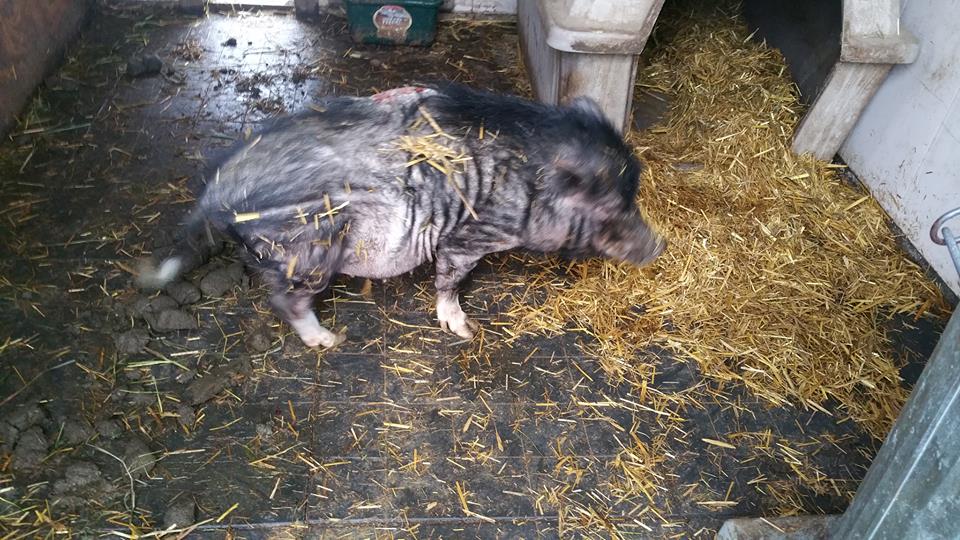

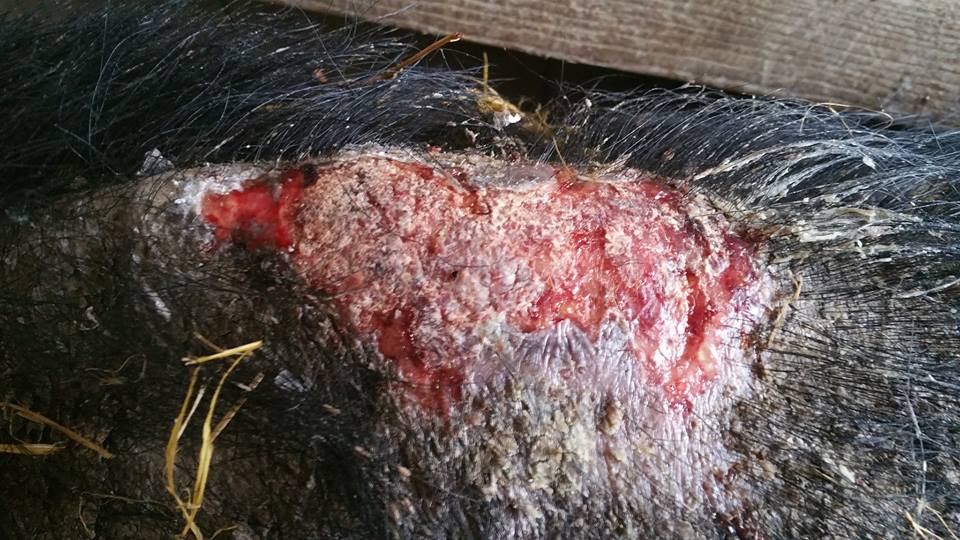
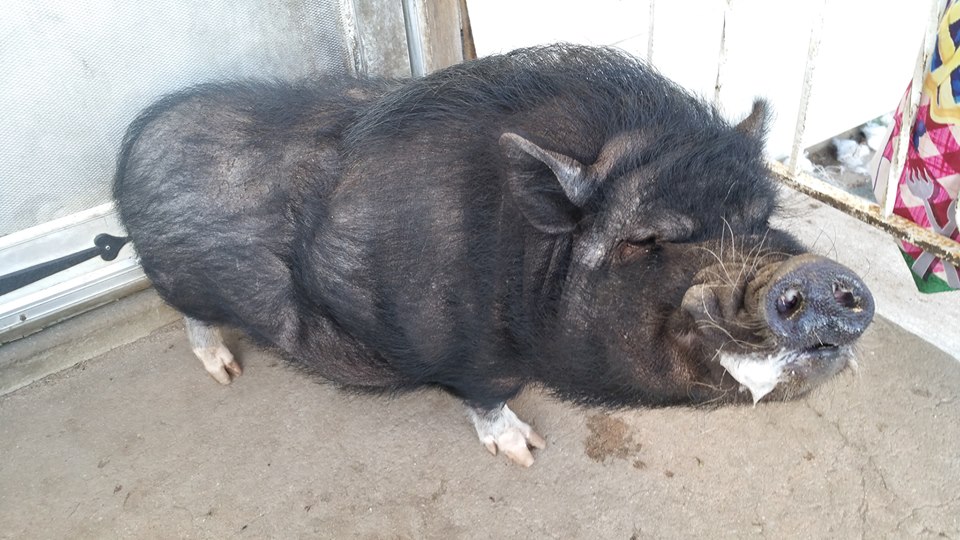






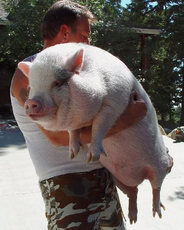

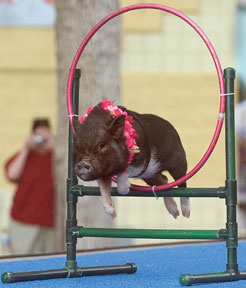

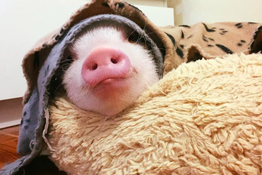



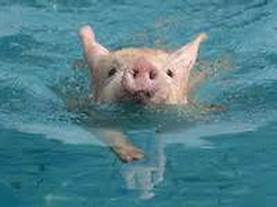


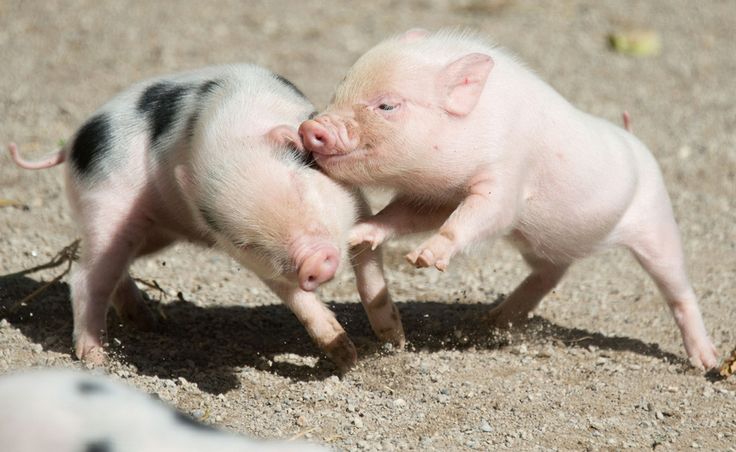


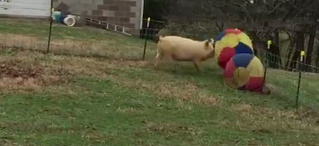












 RSS Feed
RSS Feed